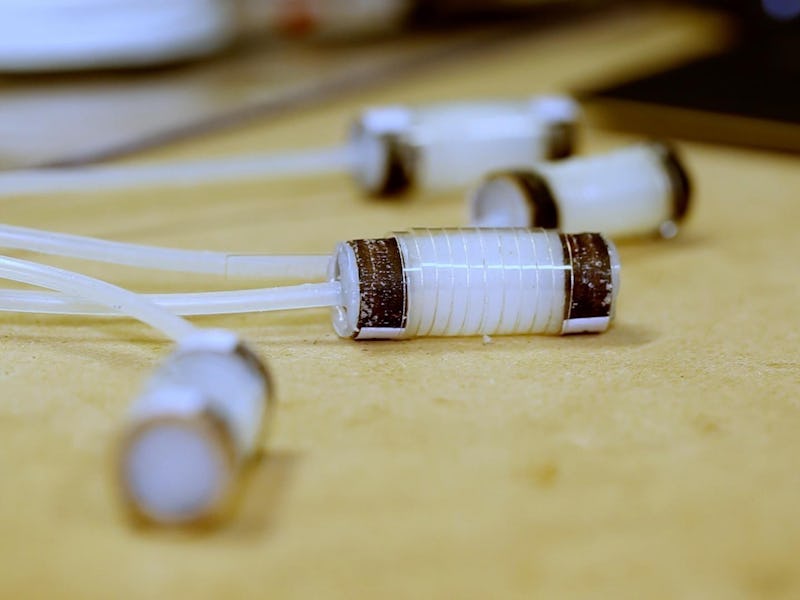A team from the École polytechnique fédérale de Lausanne (EPFL) technological university in Switzerland announced Wednesday that it has created soft, flexible robots that can mimic human muscles.
The robots work by using “muscle-like actuators” and are made from soft materials like silicon and rubber. Eventually, the EPFL researchers hope to develop “adaptable robots that are capable of navigating around in cramped, hostile environments” which can “withstand squeezing and crushing.” For now, though, the team is focused on improving the tech.
EPFL says these robots could be used to handle fragile items, improve home care, and help keep people safe by surrounding them with a soft-but-durable exoskeleton. Similar tech is currently being used in a belt that can help stroke victims by compensating for muscular deficiencies.
The belt works by pumping air into actuators made from rubber and surrounded by fishing line. The soft robots use the pressure from the air to adopt various shapes, which allows them to move with the belt’s wearer and work like human muscle. EPFL is already testing the belt with physical therapists from the University Hospital of Lausanne.
An estimated 800,000 strokes occur each year in the United States alone, according to the National Stroke Association. Many stroke survivors are left with movement and balance problems; this belt might help manage those.
The belt in action.
But soft robots are in their early stages. While researchers have built things like a soft robot octopus and competed in events like the Robosoft Grand Challenge, the field is still young.
That’s why EPFL made its robots from low-cost materials: It’s easier to build these robots than it is to model how they behave with software. So the researchers decided to make step-by-step instructions for modeling and designing these soft robots available to everyone.
This will not only allow the researchers to learn from those who use their tools, but will also make it easier for people to start experimenting with soft robots. There’s a big gap small actuators and adaptable robots — working together is the best way to close it. And in the meantime this tech can help millions of stroke victims regain control over their bodies.
